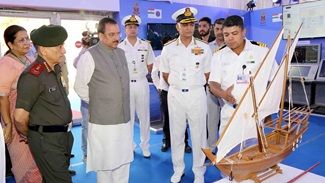In a significant move to bolster its self-reliance in critical technologies and platforms and enhance maritime security, the Indian Navy is gearing up to unveil an updated “indigenisation roadmap.”
The Indian Navy has been actively working on increasing the use of indigenous components in the construction of its warships and submarines. The primary objective is to achieve an impressive 90 percent indigenous content across all aspects of naval technology. This comprehensive endeavour aims to enhance India’s self-reliance in crucial naval assets and technologies.
Vice Admiral Sanjay Jasjit Singh, a prominent figure in the Indian Navy, has emphasised the core areas of focus within this initiative. These three components, namely “float,” “move,” and “fight,” encompass various aspects of naval warships, spanning from their structural integrity and propulsion systems to weaponry. The goal is to attain an impressive 90 percent indigenisation level in these crucial areas.
Admiral R Hari Kumar, the Chief of the Indian Navy, has lauded the substantial progress already achieved in the pursuit of self-reliance. The Navy boasts an impressive 95 percent indigenous content in the “float” category, indicating a strong foundation in shipbuilding technologies. Additionally, the “move” category, which includes propulsion systems, has reached an indigenisation level of 60 to 65 percent. The “fight” category, covering critical components like weapons and sensors, has also made strides, standing at 50 percent indigenisation.
Looking beyond current achievements, the Indian Navy is actively working on the development and incorporation of niche technologies. The ambitious goal is to advance 75 such cutting-edge technologies, a commitment that was initially made during the previous Swavlamban seminar. These endeavours underscore the Navy’s dedication to enhancing self-reliance and indigenisation in its pursuit of bolstering India’s maritime capabilities.








